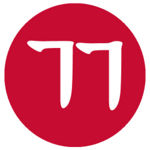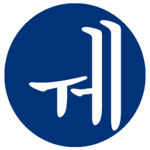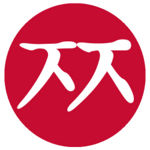Difference between revisions of "User:Estudiarcoreano"
| Line 4: | Line 4: | ||
{{-}} | {{-}} | ||
| − | == | + | == Los diptongos (doble vocales) == |
| − | + | Los diptongos se definen como: "un sonido de vocal complejo en el que la primera vocal se mueve gradualmente hacia una segunda vocal de modo que ambas vocales forman una sílaba, por ejemplo,"o" y "e" en "poeta". Las vocales que estamos aprendiendo son una combinación de vocales que ya aprendimos. Por ejemplo ㅘ es una combinación de ㅗ y ㅏ, pero con un sonido de / w / delante. Muchas de ellas se pronunció diciendo la primera vocal y la segunda vocal rápidamente, sin embargo te darás cuenta de que todos estos sonidos, excepto ㅢ, crean un sonido de / w / delante. | |
#Source: [http://encarta.msn.com/encnet/features/dictionary/DictionaryResults.aspx?lextype=3&search=Diphthong MSN Encarta dictionary] | #Source: [http://encarta.msn.com/encnet/features/dictionary/DictionaryResults.aspx?lextype=3&search=Diphthong MSN Encarta dictionary] | ||
{{-}} | {{-}} | ||
{{Hangeul intro table | {{Hangeul intro table | ||
|bgcolor = {{kred}} | |bgcolor = {{kred}} | ||
| − | | | + | |Consonante = ㄲ |
|Cons image = ㄲ.jpg | |Cons image = ㄲ.jpg | ||
| − | |Cons text = | + | |Cons text = Esta es una versión más fuerte y tenso de ㄱ. Para hacer este sonido, coloque todo en su boca como si fueras a hacer un sonido ㄱ, a continuación, mantenga esa posición durante un ligero segundo y 'empujar' más de lo normal haciendo que el sonido más fuerte. y Para obtener información completa sobre esta carta, consulte [[ㄲ]]. |
| − | | | + | |Vocal = ㅘ |
|Vowel image = ㅘ.jpg | |Vowel image = ㅘ.jpg | ||
| − | |Vowel text = ㅘ | + | |Vowel text = ㅘ es una combinación de la vocal ㅗ y ㅏ. This sounds you are pronouncing ㅗ and ㅏ together, but with a /w/ sound in front. Sounds ''similar'' to the <wa> in <wander>. IPA symbol: /wa/. For full information about this letter, see [[ㅘ]]. |
| − | |Vowel audio description1 = | + | |Vowel audio description1 = Hombre |
|Vowel audio1 = <flashmp3>wa J.mp3|leftbg=003478|rightbg=c60c30|lefticon=ffffff|righticon=ffffff</flashmp3> | |Vowel audio1 = <flashmp3>wa J.mp3|leftbg=003478|rightbg=c60c30|lefticon=ffffff|righticon=ffffff</flashmp3> | ||
| − | |Vowel audio description2 = | + | |Vowel audio description2 = mujer |
|Vowel audio2 = <flashmp3>wa C.mp3|leftbg=003478|rightbg=c60c30|lefticon=ffffff|righticon=ffffff</flashmp3> | |Vowel audio2 = <flashmp3>wa C.mp3|leftbg=003478|rightbg=c60c30|lefticon=ffffff|righticon=ffffff</flashmp3> | ||
}} | }} | ||
Revision as of 23:17, 2 June 2014
Contents
Las consonantes dobles
Vimos cómo las letras ㅋ, ㅌ, ㅊ, ㅍ fueron similares a las letras ㄱ, ㄷ, ㅈ, ㅂ en el paso 4. Ahora vamos a aprender otro grupo de letras que son también similares, ㄲ, ㄸ, ㅉ, ㅃ y ㅆ . Si se han fijado, no son más que una versión doble de ㄱ, ㄷ, ㅈ, ㅂ, ㅅ. Estos sonidos no sólo son los más difíciles de explicar, sino los más difíciles de pronunciar para los hablantes no nativos, ya no hay nada remotamente similar en español u otros idiomas. Estas letras se llevará una gran cantidad de práctica de pronunciar, así que escucha con atención el audio y asegúrese de que puede distinguirla de otros sonidos. La mejor manera que puedo generalizar estos sonidos son que son más fuertes y las versiones más tensos de algunos de los anteriores sonidos que ha aprendido. Tenga en cuenta estas consonantes no son aspirados.
Los diptongos (doble vocales)
Los diptongos se definen como: "un sonido de vocal complejo en el que la primera vocal se mueve gradualmente hacia una segunda vocal de modo que ambas vocales forman una sílaba, por ejemplo,"o" y "e" en "poeta". Las vocales que estamos aprendiendo son una combinación de vocales que ya aprendimos. Por ejemplo ㅘ es una combinación de ㅗ y ㅏ, pero con un sonido de / w / delante. Muchas de ellas se pronunció diciendo la primera vocal y la segunda vocal rápidamente, sin embargo te darás cuenta de que todos estos sonidos, excepto ㅢ, crean un sonido de / w / delante.
- Source: MSN Encarta dictionary
|
| ||||||||||
|
ㅘ es una combinación de la vocal ㅗ y ㅏ. This sounds you are pronouncing ㅗ and ㅏ together, but with a /w/ sound in front. Sounds similar to the <wa> in <wander>. IPA symbol: /wa/. For full information about this letter, see ㅘ.
|
Esta es una versión más fuerte y tenso de ㄱ. Para hacer este sonido, coloque todo en su boca como si fueras a hacer un sonido ㄱ, a continuación, mantenga esa posición durante un ligero segundo y 'empujar' más de lo normal haciendo que el sonido más fuerte. y Para obtener información completa sobre esta carta, consulte ㄲ. | ||||||||||
| Practice | |
|---|---|
| 가 | |
| 카 | |
| 까 | |
| 꺼 | |
| 끄 | |
| 과 | |
| 화 | |
| 봐 | |
|
| ||||||||||
|
ㅙ is a combination of the vowel ㅗ and the vowel ㅐ. This sounds you are pronouncing ㅗ and ㅐ together, but with a /w/ sound in front. Sounds similar to the <we> in <wet>. IPA symbol: /wɛ/. For full information about this letter, see ㅙ.
|
This is a more stronger and tensed version of ㄷ. To make this sound, place everything in your mouth as if you were going to make a ㄷ sound, hold your tongue in that position for a slight second and 'push off' with more force than normal making the sound stronger. For full information about this letter, see ㄸ. | ||||||||||
| Practice | |
|---|---|
| 다 | |
| 타 | |
| 따 | |
| 또 | |
| 괘 | |
| 돼 | |
|
| ||||||||||
|
ㅚ is a combination of the vertical vowel ㅗ and the horizontal vowel ㅣ. Korean dictionaries list this as identical to ㅞ, so like the <we> in <wet>. Some go further and say that ㅙ = ㅚ = ㅞ. IPA symbol: /we/. For full information about this letter, see ㅚ.
|
This is a stronger version of ㅅ. Just make your hiss stronger than the normal /s/. When ㅆ is combined with the vowels ㅣ and the double vowels ㅑ, ㅕ, ㅛ, or ㅠ it sounds like a slightly stronger version of the "sh" sound. For full information about this letter, see ㅆ. | ||||||||||
| Practice | |
|---|---|
| 사 | |
| 싸 | |
| 서 | |
| 시 | |
| 씨 | |
| 써 | |
| 퇴 | |
| 되 | |
| 쇠 | |
|
| ||||||||||
|
ㅝ is a combination of the vertical vowel ㅜ and the horizontal vowel ㅓ. Sounds similar to <wo> in <wonderful>. Again, try to focus on saying ㅜ and ㅓ together quickly. IPA symbol: /wʌ/. For full information about this letter, see ㅝ.
|
This is a more stronger and tensed version of ㅂ. To make this sound, put your lips together as if you were going to make a ㅂ sound, then hold your lips a slight second and 'push off' harder than normal making the sound stronger. For full information about this letter, see ㅃ. | ||||||||||
| Practice | |
|---|---|
| 보 | |
| 포 | |
| 뽀 | |
| 삐 | |
| 궈 | |
| 둬 | |
| 뭐 | |
|
| ||||||||||
|
ㅜ is a combination of the vertical vowel ㅜ and the horizontal vowel ㅔ. This vowel does not appear very much. It sounds like the "wai" in "wait," but shorter and almost like the "wet" in "wet." It is also basically pronounced the same as ㅚ and ㅙ. IPA symbol: /we/. For full information about this letter, see ㅞ.
|
This is a more stronger and tensed version of ㅈ. To make this sound, place everything in your mouth as if you were going to make a ㅈ sound, hold that position for a slight second and 'push off' with more force than normal making the sound stronger. For full information about this letter, see ㅉ. | ||||||||||
| Practice | |
|---|---|
| 자 | |
| 차 | |
| 짜 | |
| 쪄 | |
| 쉐 | |
| ||||
|
ㅟ is a combination of the vertical vowel ㅜ and the horizontal vowel ㅣ. Think of the <wee> in <weed>. IPA symbol: /wi/. For full information about this letter, see ㅟ.
| ||||
| Practice | |
|---|---|
| 귀 | |
| 뒤 | |
| 튀 | |
| ||||
|
Our final vowel is ㅢ. It is a combination of the vertical vowel ㅡ and the horizontal vowel l. This does not make a "w" sound. It is unrounded. Think of the difference between ㅜ and ㅡ and you will get the idea. IPA symbol: /ɰi/. For full information about this letter, see ㅢ.
| ||||
More Examples
| Word | Audio |
|---|---|
| 가깝다 (to be close) | |
| 과외 (private lesson) | |
| 가위 (scissors) | |
| 과일 (fruit) | |
| 과자 (snack) | |
| 기엽다 (to be cute) | |
| 기쁘다 (to be glad) | |
| 까다롭다 (to be picky) | |
| 깍두기 (cubed radish kimchi) | |
| 깜빡 (flash) | |
| 깜짝 놀라다 (to be surprised) | |
| 깎다 (to cut) | |
| 꽃 (flower) | |
| 뜨겁다 (to be hot [touch]) | |
| 바뀌다 (to change) | |
| 법원 (court of law) | |
| 비싸다 (to be expensive) | |
| 빠르다 (to be quick) | |
| 빠지다 (to fall out) | |
| 스웨덴 (Sweden) | |
| 싸구려 (cheap goods) | |
| 싸다 (to be cheap) | |
| 싸우다 (to fight) | |
| 쓰다 (to use, to write) | |
| 영화 (movie) | |
| 예쁘다 (to be pretty) | |
| 오빠 (older brother [for a female]) | |
| 왕 (king) | |
| 왜 (why) | |
| 외국 (foreign country) | |
| 외롭다(to be lonely) | |
| 외숙모 (mom's brother's wife) | |
| 원 (The won, Korean currency) | |
| 웬일 (what reason) | |
| 위험하다 (to be dangerous) | |
| 의료 보험 (medical insurance) | |
| 의사 (doctor) | |
| 의자 (chair) | |
| 짜증 나다 (to be annoyed) | |
| 짬뽕 (a type of Chinese spicy noodle) | |
| 치과 (dentist office) | |
| 취하다 (to get drunk) | |
| 코끼리 (elephant) | |
| 튀김 (fried food) | |
| 회사 (company) | |
| 원숭이 (monkey) |
Writing
Writing the double consonants requires just writing the consonants we previously learned twice, so to write ㄲ you just write ㄱ twice. For the vowels in this section, you write the bottom vowel (ㅗ, ㅜ, ㅡ) before the side vowel (ㅏ, ㅐ, ㅓ, ㅔ, ㅣ). So if you write ㅘ, you write ㅗ first, then ㅏ. A section 7 will be made in the future for more advanced pronunciation. (Do you notice that we avoided batchim examples with ㅎ? That was for a reason.)

|
Additional practice
Need help distinguishing between some sounds? Here are some more examples (or take the quiz below)
- ㄱ ㄲ ㅋ additional practice
- ㅂ ㅃ ㅍ additional practice
- ㄷ ㄸ ㅌ additional practice
- ㅈ ㅉ ㅊ additional practice
- ㅅ ㅆ additional practice
Quiz
Have trouble distinguishing some of the sounds in this section with other previous sounds? Check out these quizzes then:
- ㄱ ㅋ ㄲ quiz
- ㄷ ㅌ ㄸ quiz
- ㅅ ㅆ quiz (coming soon)
- ㅈ ㅊ ㅉ quiz (coming soon)
- ㅂ ㅍ ㅃ quiz (coming soon)












